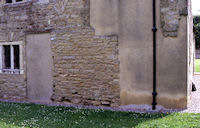
Figure 10: Complex stratigraphy of Sutton House displayed #169; LondonTown.com
Through the last twenty-five years there has been a growth in smaller building preservation trusts working on historic houses, and a wider range of types of building and types of reconstruction have started to be employed. Key principles for this generation of reconstructors often follow the ideas of the early conservation movement: 'consider the effects on authenticity and integrity' (English Heritage 2008, 45). Other guidance confronts modern issues like sustainability, monitoring of projects and funding issues (English Heritage 2008). Pragmatic considerations and examples of how work can be undertaken are shared (English Heritage 2009). A primary area of discussion concerns the value and preservation of material remains: the preservation of historic material or replacement of like for like, the value of historic building materials as a tradition and aesthetic element of the historic environment, and their efficiency in environmental terms have all been highlighted as important principles of modern conservation (English Heritage 2008).
While reconstruction work on historic houses in this period was often bold, and recreated much lost material, the desire to preserve more evidence from more periods of a building's history is also clear. Sutton House in Hackney, London, was acquired by the National Trust in the 1930s, but was sublet until the 1980s. The house was in a poor state of repair when a desire to open it to visitors emerged from the local community. The Sutton House Society was formed in 1987, and the Society planned a scheme for refurbishment, which was implemented from 1990 to 1994. The philosophy of this reconstruction work was to give snippets of the appearance of the house at different times in the past, and show the complexity of the structure (Fig. 10) (Mike Grey, Sutton House Society, pers. comm.). This created a complex account of the history of the building, displaying representative features of its past from its construction in phases from 1535 to its inhabitation by squatters in the early 1980s. A similar long history is displayed at Fiddleford Manor, where modern alterations are clearly visible, infilled windows and doorways to demolished extensions being brick-built and rendered and demolished sections of the building marked out in the surrounding land (Figs. 11 and 12). This is aligned with other shifts in heritage management to preserve more from more recent contexts of archaeological excavations (Hudson 1981, 155-6), and for museums to be more active in collecting representative material from contemporary society (Pearce et al. 2003).


Figure 11: Interventions are clearly visible at Fiddleford Manor
Figure 12: Demolished sections of Fiddleford Manor have been revealed through excavation and marked in the grass
As the success of historic houses and open air museums grew, indoor heritage attractions became more common in the 1980s and 1990s, and museums began to create reconstructions of elements of the historic environment within their displays (Walsh 1992, 105-6). An increasingly common practice in recent years at historic house sites has been to create interpretation centres in separate, often modern buildings, which house a variety of displays. This has been done at Blakesley Hall, Birmingham, and the Weald and Downland Museum, West Sussex.
Over the last twenty years reconstructors have had to consider how to deal with 19th and early 20th century additions, alterations or insertions in modern conservation programmes. The south façade of Ightham Mote has undergone a series of modifications. It was altered in the early 20th century, and Elizabethan-style studs were added to the external face of the upper floor, over the plastered and painted frontage, behind which is the structural frame. As further conservation work was undertaken in the late 1990s, features of different phases were retained and protected while elements were stripped and repaired. The north-east elevation had wattle-and-daub infill panels stripped, revealing the two layers of timber-framing and overlying studs, while windows, rainwater goods and timbers were protected (Fig. 13). There was a debate about the conservation philosophy to be applied in the 1990s to works less than a hundred years old. The interpretation panels at the site explain, 'normally the Trust would not contemplate restoration but in this case a repair would involve applying wholly new material to reproduce a 1900 alteration. Elsewhere we have followed conservation principles with piecemeal repair of the frame and refrained from replacing sound late timbers' (interpretation panel 2002). The decision was made to retain the timbers which date to 1904 because 'the alterations...have contributed to the familiar image of the house for the last 70 years' (interpretation panel 2002).
There have been many different organisations involved in works to historic buildings, including the National Trust, the SPAB, English Heritage, local authorities and museums' services, private owners and historic building trusts. These groups have had different priorities and aims, and the ways in which they have approached the reconstruction of buildings have evolved through that time. The philosophy underlying many early works is not usually recorded, so an understanding of the thought behind the work needs to be interpreted from the buildings themselves. Even from a period when there was a more explicit conservation philosophy and policy, the stated aims of projects, including for example 'reversibility', are often not evidenced within the buildings themselves (Pearce 1993, 234).
In more recent years the growth of the media has increased the potential for people to comment on works undertaken to historic buildings, and there is a greater record of current views, which are often found to be divided, as with the debate on the treatment of a medieval guildhall in an episode of the television programme Grand Designs in 2010 (Channel Four 2010). Although some reconstructions, especially in more recent years have been seen as controversial, many of these changes didn't attract comment in the contemporary media.
© Internet Archaeology/Author(s)
University of York legal statements | Terms and Conditions
| File last updated: Mon Jan 24 2011